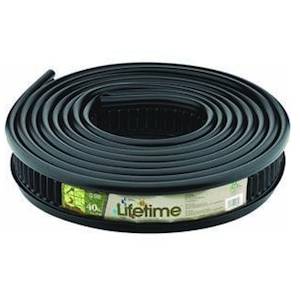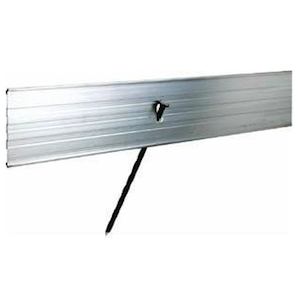Lawn Edging Ideas
So you've decided to reduce the environmental and time impacts of maintaining a large grass lawn by reducing the amount of grass in your yard; whether you've chosen to add flower or shrub beds, vegetable gardens, increased patio space, or other landscaped areas, you're going to need edging to keep these new areas separated from each other, and to give the whole yard a nice, clean appearance.
Lawn Edging Ideas - The Lawn Edging
The use of edging in your yard or garden areas creates a transition between garden beds, grassy areas, and areas like driveways, walkways, or patios. An edge that is properly installed and maintained adds a degree of professionalism to your landscaping, and helps to make each area easier to maintain.
As with most yard projects, there are many types of edging available to suit any preference, ranging from simply a line dug in the dirt to more complex edging such as stone, brick, concrete, or aluminum edging.
Types of Edging for Lawns
Placing edging in your yard can be as simple or as complicated as you wish to make it. For a simple (and free!) edging, you can use a sharp spade to dig a 'V' shaped trench along the border. For more professional, decorative, and longer-lasting edging, you can dig out a trench along the border and line it with stones, pavers, or small fences.
Let's take a quick look at a few of the lawn edging materials available:
Lawn Edging Ideas - Plastic Edging
Plastic edging is a good choice for simple strip edging, a shallow barrier anchored beneath the ground in which only the very top of the edging is visible.
Strip edging works to subtly set the garden or flower bed and the lawn apart. Plastic edging works well, in that it is easy to create curves, is less expensive, and easy to install.
Some other advantages of plastic edging:
- Plastic edging is very pliable and won't crack in hot or cold temperatures.
- Plastic edging is resistant to ground heaves, although in cold climates strip edging may dislodge and need to be reinstalled occasionally.
- Many manufacturers offer plastic edging made from recycled materials. Seek these out to make your landscape project even more environmentally-friendly!
Lawn Edging Ideas - Metal Edging
For strength and durability, metal edging is an excellent option for around beds or other landscaped areas.
Metal is less pliable than plastic edging, and is best for straight, level applications. Metal edging is also quite easy to install.
- Metal edging can be painted to match your landscaping.
- Metal edging will last a very long time.
- Aluminum metal edging is lighter than regular steel edging, and won't ever rust.
- As with plastic edging, some metal edging products are made from recycled metals and should always be considered to lessen your lawn's environmental impact.
Lawn Edging Ideas - Concrete Edging
Concrete edges are best used to help support paved areas like driveways, or other hard-surfaced areas such as patios.
Like plastic and metal edging, concrete also makes maintenance of any landscaped area easier. Concrete edging is more expensive than the simpler plastic or metal edging, but has several advantages:
- Concrete edging is extremely durable and long-lasting.
- Concrete edging is maintenance-free, and won't move out of place once installed.
- Concrete edging is available in a huge variety of colors and patterns to match any landscape or creative choices. - Concrete edging comes in cast or block forms, making it easy to transport and install.
For more outdoor landscape ideas, see our articles on pavers and patio paver design
- Landscape Pavers - An Introduction
- Pavers for Patio
- Paver Designs
- Patio Paver Maintenance
- How to Lay Pavers






































































